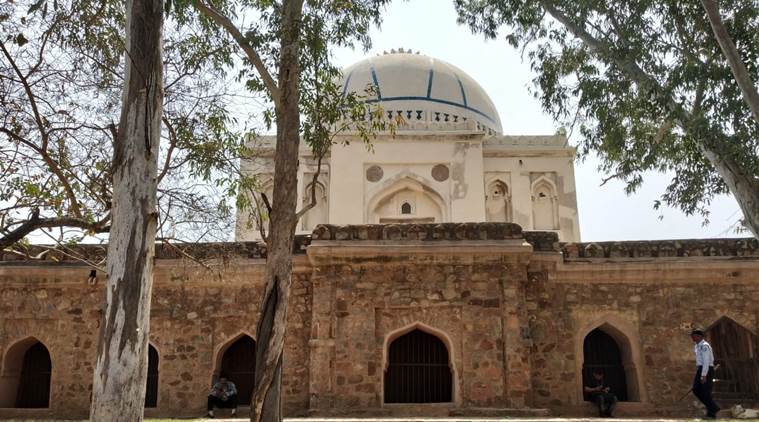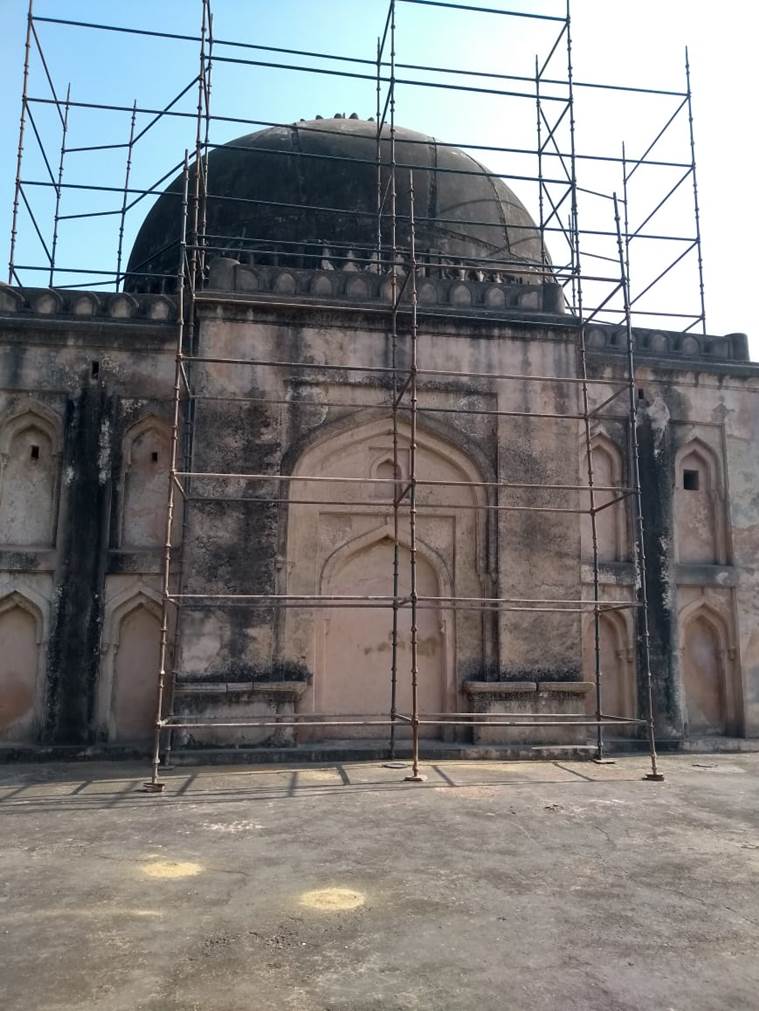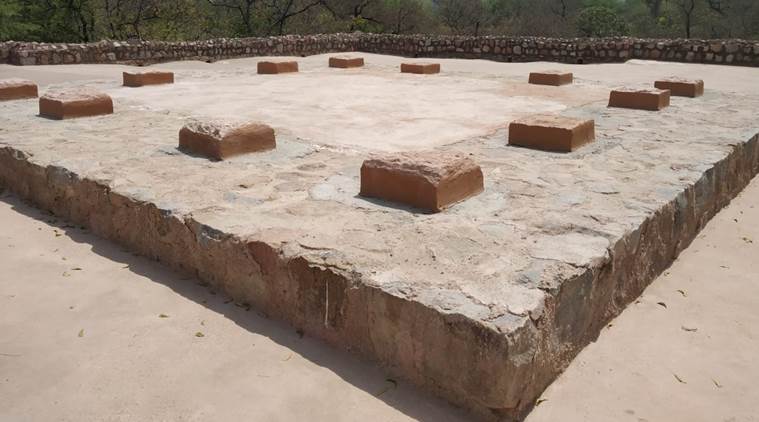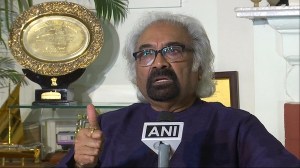- India
- International
Delhi’s Tughlaq era Bara lao ka gumbad gets a fresh lease of life
The ‘Bara lao ka gumbad’ traces its history back to the 14th century when the Tughalqs had built its adjoining area as a garden, making it one of the oldest gardens of Delhi.
 The Bara lao ka gumbad in Vasant Vihar (Photo- Adrija Roychowdhury)
The Bara lao ka gumbad in Vasant Vihar (Photo- Adrija Roychowdhury)
A magnificent white domed structure fitted with lustrous blue tiles, arising out of medieval era ruins is a sight that greets those taking the sharp turn from from the Basant Lok market in South Delhi. The ‘Bara lao ka gumbad’ as the structure is called traces its history back to the 14th century when the Tughalqs had built its adjoining area as a garden, making it one of the oldest gardens of Delhi.
Until recently, the monument lay largely forgotten, visible to passersby as one among the many bits of historical structures that dot the landscape of Delhi. Lately, however, it has been given a new lease of life by the Delhi state archaeology department in collaboration with the Indian National Trust for Art and Cultural Heritage (INTACH).
 The structure within DDA’s Vasant Udyan Park in Vasant Vihar was first considered for restoration back in 2010 when Delhi was prepping for the Commonwealth Games. (Picture provided by INTACH)
The structure within DDA’s Vasant Udyan Park in Vasant Vihar was first considered for restoration back in 2010 when Delhi was prepping for the Commonwealth Games. (Picture provided by INTACH)
“The garden which consists the remains of a mosque, a water channel and a well belongs to the Tughlaq period, while the tomb known as the ‘Bara lao ka gumbad’ was built during the Lodi period. However, it is not known who built the structure,” says director of projects in INTACH, Ajay Kumar.
The structure within DDA’s Vasant Udyan Park in Vasant Vihar was first considered for restoration back in 2010 when Delhi was prepping for the Commonwealth Games. “That time it was badly encroached upon. People were living inside the tomb and in the adjoining structure known as the ‘baradari’ where small rooms had been constructed,” says conservator Suraj Kumar. The monument underwent its first phase of conservation during that period when its premises were vacated.
The need for further restoration came up yet again last year when the DDA park was being developed. “The idea of the state archaeology department, government of Delhi and the DDA is also to use this monument for some small cultural programmes related to the history and culture of Delhi,” says Director Kumar. He explains that what we now see as the ‘baradari’ was all ‘kuchha’. “Now it is all plastered so it is like a place where you can have performances or small events,” he says.

“Since the park was undergoing rejuvenation at that time, the state archaeology department was also requested to develop and beautify the monument further,” says conservator Kumar. “It has been almost eight years since the last phase of restoration and no maintenance was carried out during this period. So the first thing to do was to clean the monument,” says director Kumar. He adds that during this phase the tiles of the monument were also restored. “There were rifts in the dome of the monument which used to be fitted with blue glazed tiles. So we developed similar tiles and restored them,” says conservator Kumar.
“The painting that you can see on the medallion was not visible. It was all covered with dark soot. All that has been carefully cleaned. All the arches that you can see now were damaged. They have now been restored using only traditional building materials and methods,” says Kumar.
 The baradari adjoining the bara lao ka gumbad. (Photo- Adrija Roychowdhury)
The baradari adjoining the bara lao ka gumbad. (Photo- Adrija Roychowdhury)
The conservation of the monument is still ongoing. What remains is the restoration of two wells, and the construction of a gate which would be completed in the next couple of weeks, following which the monument would bask in the glory of the time when the Delhi Sultans first conceived it.
Apr 24: Latest News
- 01
- 02
- 03
- 04
- 05







































